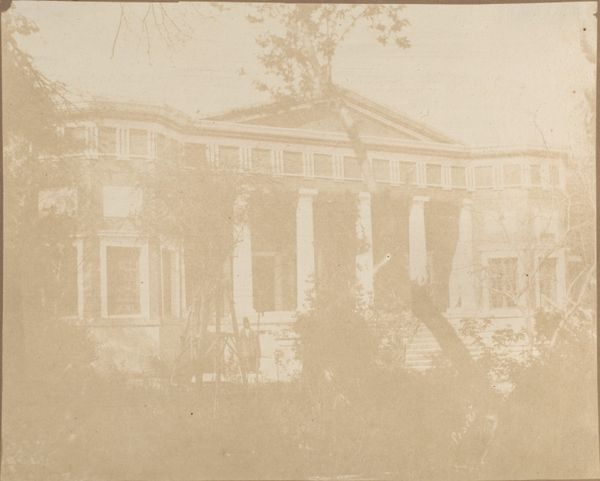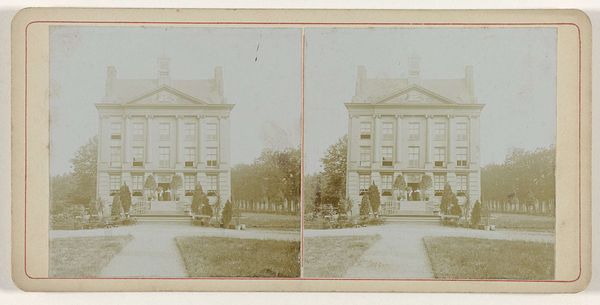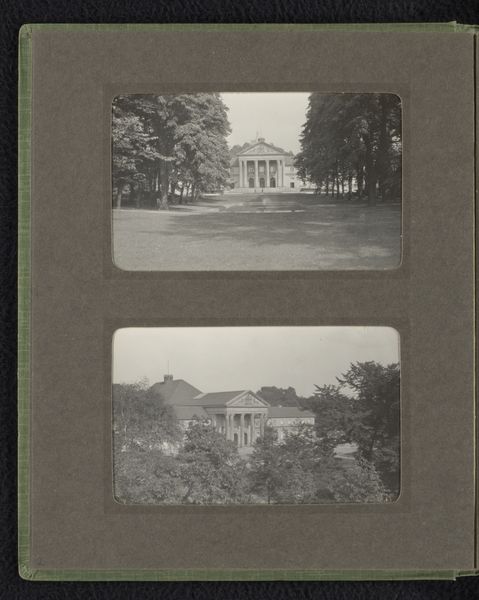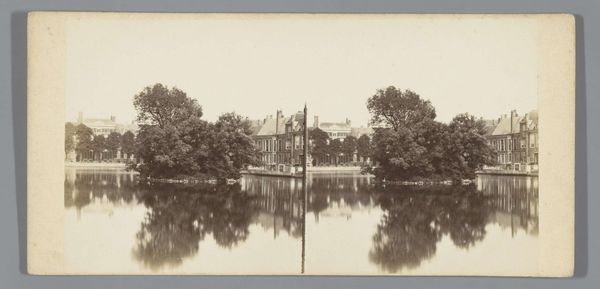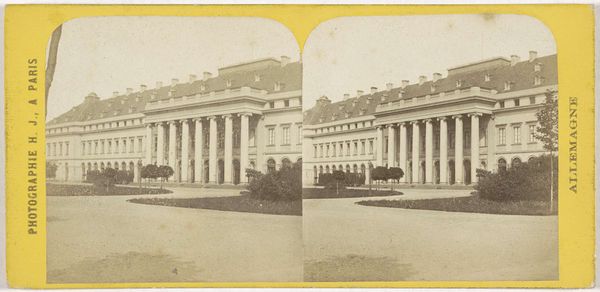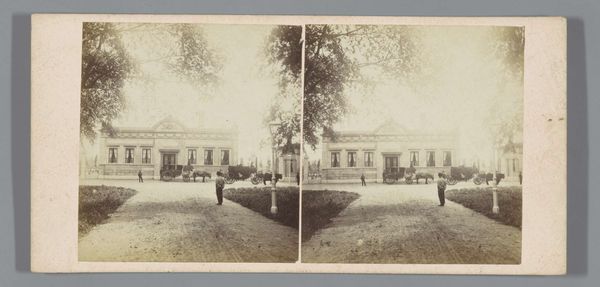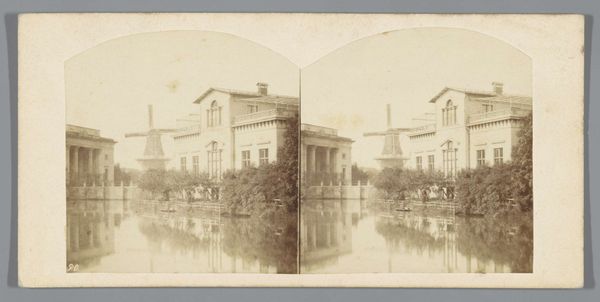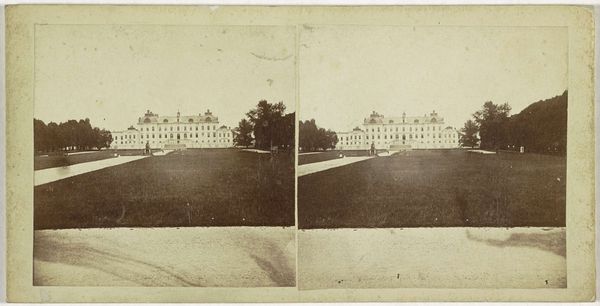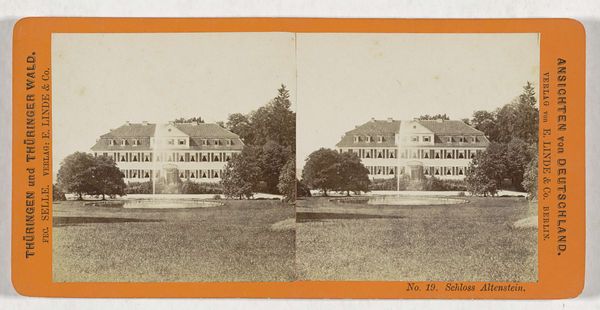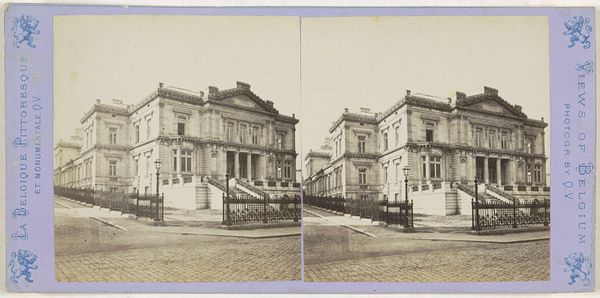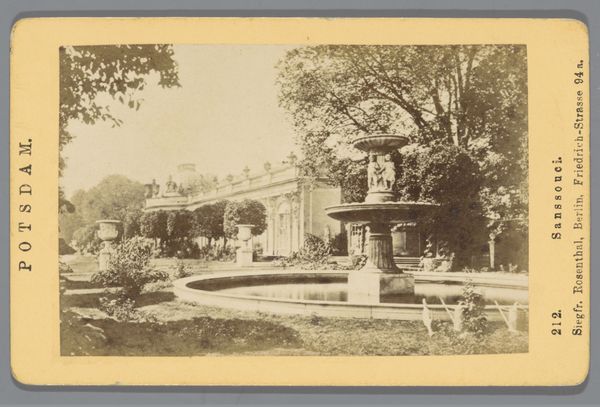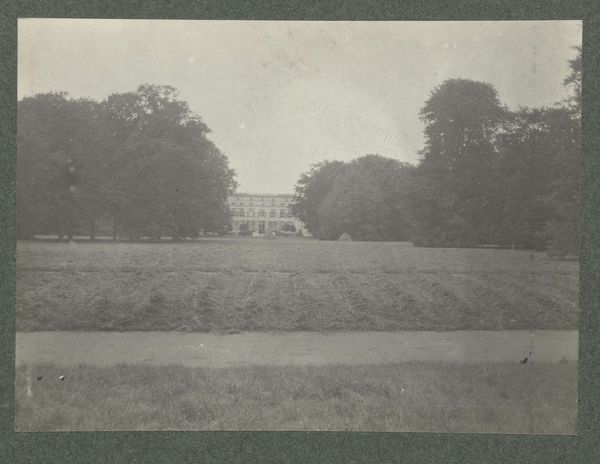
Dimensions: height 86 mm, width 170 mm
Copyright: Rijks Museum: Open Domain
This stereograph, Villa Boschlust on the outskirts of The Hague, was made by Pieter Oosterhuis sometime in the mid-19th century, using photography. The photographic process itself is crucial here. Oosterhuis would have been working with sensitized glass plates, a painstaking and highly skilled operation. The sepia tone comes from the chemical development, fixing the image in a manner that was still relatively new technology at the time. The real novelty of this image is that it’s a stereograph. The double image, when viewed through a special device, creates an illusion of three-dimensionality. This was a wildly popular form of entertainment and documentation in the Victorian era, a way of bringing the world into people's homes. In its own way, stereography was an early form of globalization, a way of collapsing space and time through reproducible images. Looking at the Villa Boschlust itself, think about the labor that went into its construction, and then the labor that went into capturing it so faithfully, to be reproduced and enjoyed at scale. This image is a perfect encapsulation of the era's fascination with progress and accessibility.
Comments
No comments
Be the first to comment and join the conversation on the ultimate creative platform.

